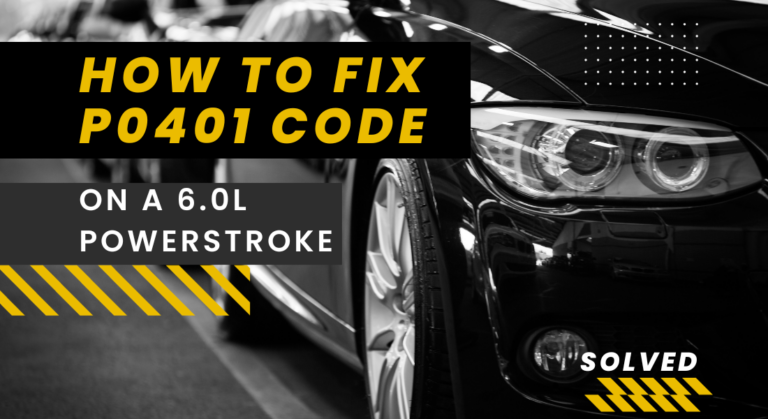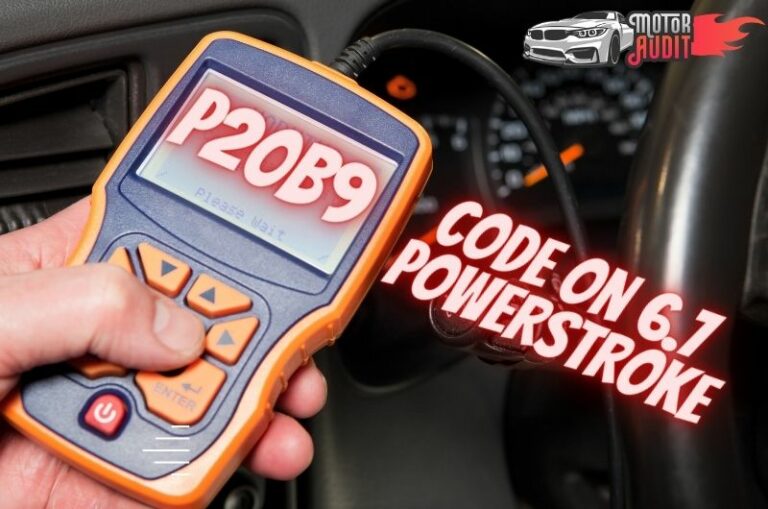6.0L Powerstroke Injection Control Pressure Problems Troubleshooting
The 6.0 Powerstroke is a quality engine that offers very good service when in good condition. But it starts to malfunction and show various issues when the Injection Control Pressure (ICP) becomes low.
A low ICP is caused by a variety of factors, with the most common being a faulty ICP sensor. The solution to that is to simply get a replacement. In other cases, the fault lies with the pressure regulator or the PCM.
Keep reading below to learn more about the symptoms and causes of a low ICP on the Ford 6.0 Powerstroke engine, and the appropriate fixes for them.
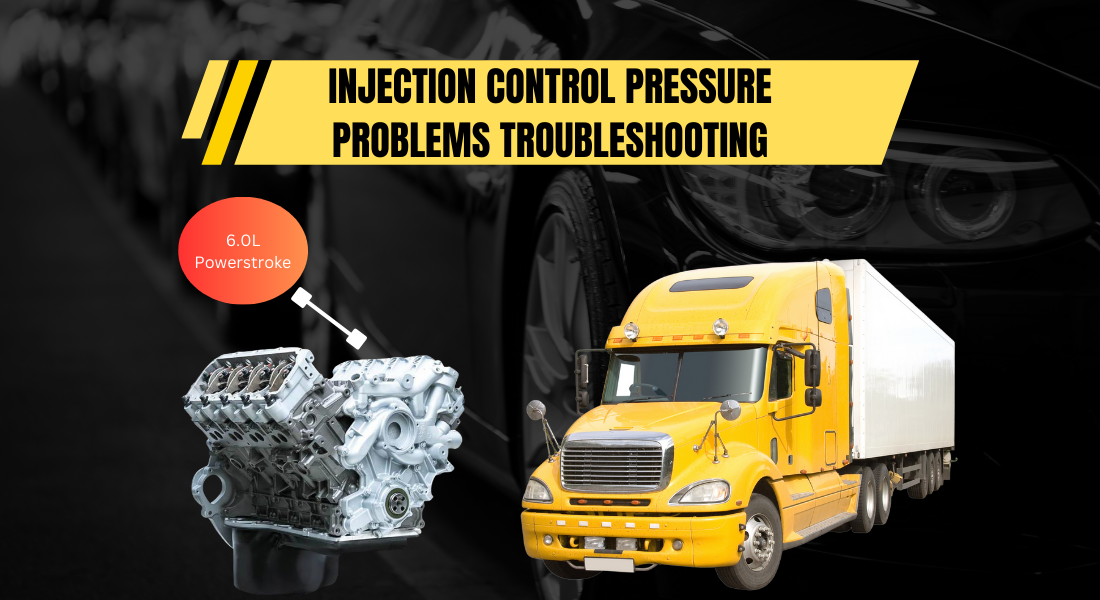
What is Injection Control Pressure On 6.0 Powerstroke?
The Powerstroke engines are a class of diesel engines that are produced by and used in Ford vehicles, mainly trucks and SUVs.
The 6.0 Powerstroke engines replaced the 7.3 L ones in 2003 in order to keep up with the changing emission standards as they offered cleaner emissions compared to the 7.3 ones.
The 6.0 Powerstroke engines were used in all Ford Super Duty trucks until 2007. It was subsequently replaced by the 6.4 Powerstroke.
Symptoms Of A Low Injection Control Pressure On 6.0 Powerstroke
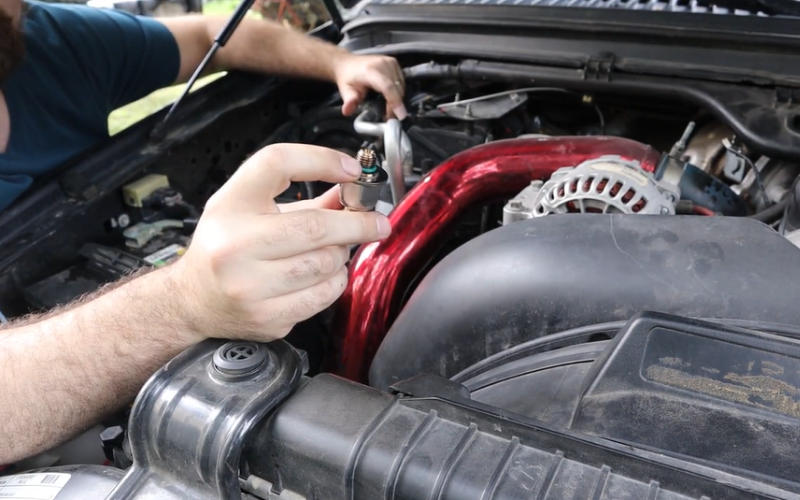
A low ICP on the 6.0 Powerstroke engine prevents the engine from functioning properly. Usually, you will notice issues with starting and ignition when you put your foot on the gas pedal. Some of the most common symptoms of this issue are given here.
Difficulty starting the engine
There is a minimum threshold of pressure that must be maintained for the powerstroke engine to start. If the threshold is not met, the engine may require more cranks to start or may not start altogether.
Engine Lights Illuminated
If there is a problem with the ICP of the 6.0 Powerstroke or the circuits connected that keep pressure lower than required, then the engine lights will immediately light up to signal the problem to the driver.
Poor Fuel Efficiency
If there is an improper detection of fuel usage by the ICP sensors, this will cause the engine to misfire. There will be a drop in engine power and it will become less fuel efficient.
Turbo Lag
When you put your foot on the accelerator pedal, the turbo does not immediately come into effect. The time it takes for that to happen is called a turbo lag. If you notice a longer turbo lag, it indicates low ICP.
Unresponsive Engine Throttle
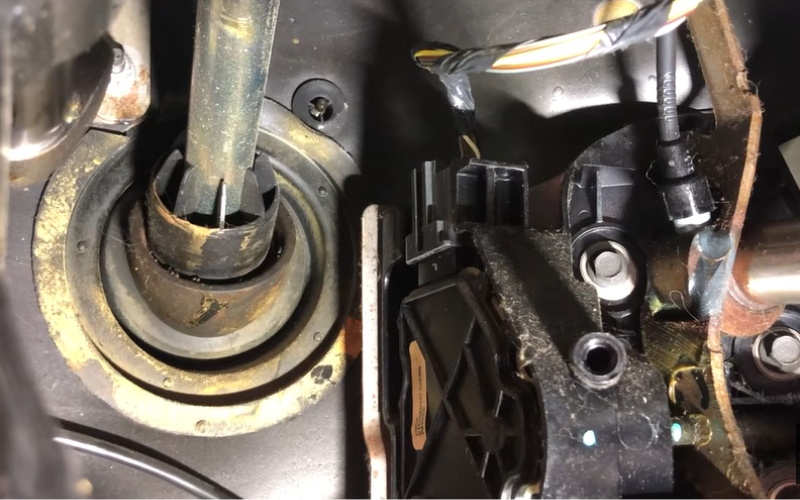
An unresponsive engine throttle means there is no fuel transmission between the fuel lines and the engine.
Causes Of A Low Injection Control Pressure On 6.0 Powerstroke
A low 6.0 Powerstroke ICP implies that there is not enough pressure in the engine. You are not wrong to assume a faulty pressure sensor is the root cause, but sometimes the source of the problem may lie elsewhere. The most common causes of this problem are:
- Dirty oil filter
- A malfunctioning ICP sensor
- Oil pressure lowered due to leaks from the engine
- Faulty fuel pressure regulator
- A faulty powertrain control module
How To Fix A Low Injection Control Pressure on 6.0 Powerstroke?
A low ICP will cause the ICP sensor to send a faulty measurement to the engine, which causes inefficient usage of fuel.
Identifying where the problem is coming from will help you make the proper readjustments to bring the ICP back to normal.
1. Clogged Oil Filter: Cleaning the clogged up oil filter
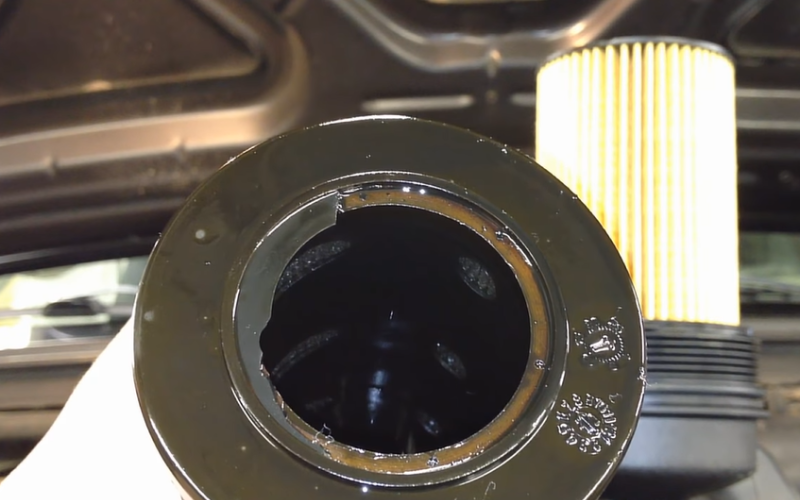
The engine oil inside the 6.0 Powerstroke engine keeps the engine lubricated and functioning properly. If the filter becomes dirty, it clogs up and causes low ICP, resulting in gradual engine decay.
Read the following instructions to get the oil filter cleaned up.
- Start the process by taking off the cap from the filter.
- Next step is to break off the terminal connections. Then disconnect the negative one first.
- Under the fuel filter, place a bucket for catching all remaining fuel once the filter is opened.
- Before detaching the fuel lines, you have to remove the clips first.
- Now you have to clean the fuel filter from the inside. Use a pressurized carburettor cleaner for that.
- If there is even a bit of debris lying inside, tap it out. Then, finally reconnect the filter.
You will only need to spend on the pressurized carburetor cleaner which will cost between $3-5.
2. A Faulty Injector Pressure Control Sensor: Replacing The Injector Pressure Control Sensor
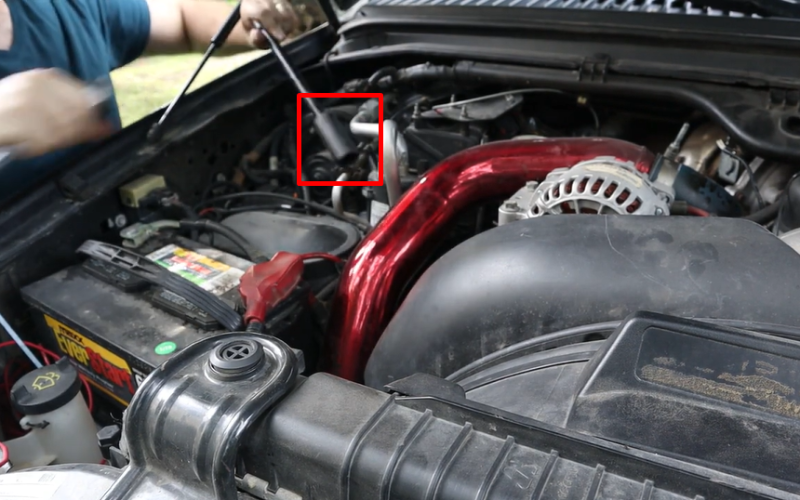
The most common cause of low ICP on the 6.0 Powerstroke is a faulty sensor. If the ICP sensor on the 6.0 Powerstroke malfunctions, you will find the engine will crank but it won’t throttle. Replace the old ICP sensor with a new one with the following steps.
- Step 1: Start by cutting out the fuel supply.
- Step 2: Next you have to deplete the remaining pressure from the system. For this, you need to turn on the engine a few times until all the fuel in the system is completely used up.
- Step 3: To access the IC pressure sensor, you will need to remove any obstructions in the way such as the air filter box.
- Step 4: Now take off the air pressure sensor. Be careful when you unplug the connections.
- Step 5: Now you can put in the new IC pressure sensor.
- Step 6: After installing the new pressure sensor, you can reconnect the fuel supply.
- Step 7: Turn on the ignition and keep it on for 10-20 seconds. If there are any fuel leaks, you will notice.
- Step 8: Replace the components that were removed to access the IC pressure sensor.
To replace the ICP sensor, you will need to spend around $120-150.
3. Engine Oil Leaks: Calling A Professional To Identify And Fix The Leak
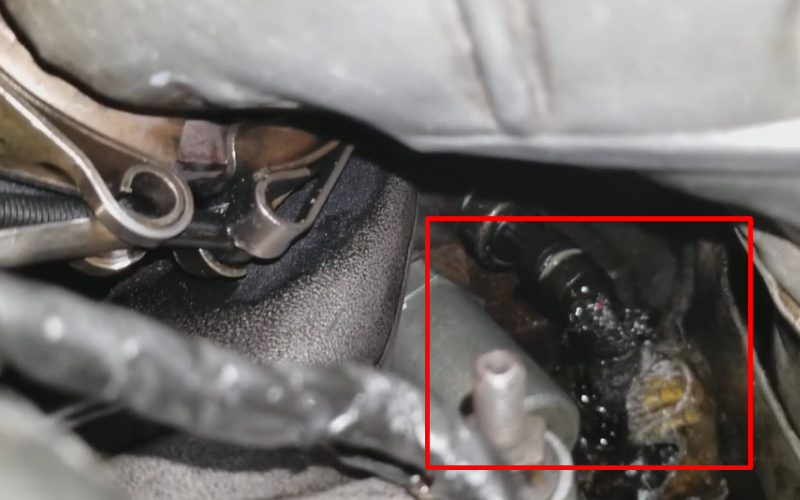
There are various types of leak that the 6.0 Powerstroke engine vehicles can experience. The different types of leaks include:
- Oil filter leakage
- Failing or worn gasket
- Worn seal or sealant material
- Loose drain plug
- Oil pan damage
This is something that is beyond the scope of a DIY repair. You will need to consult a professional on this. The mechanic will check the nature and source of the leak and determine what type of leak it is.
The mechanic must be able to identify the specific source of the leak so they can decide how to approach the repairs. Then depending on that, they will provide the cost estimates.
4. Faulty Fuel Pressure Regulator: Replace The Fuel Pressure Regulator
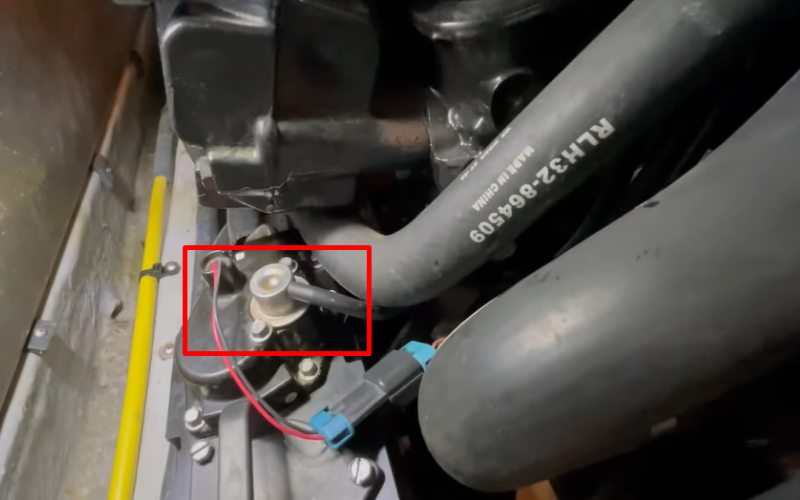
A faulty fuel pressure regulator results in fuel leaks, which can be potentially very hazardous. It also results in fuel wastage.
To fix this issue, you need to get it replaced.
- Start by detaching the vacuum line on the fuel pressure regulator.
- Put an under the fuel line connection to prevent the fuel from spilling everywhere.
- Now detach the fuel line.
- Then detach the bolts keeping the fuel pressure regulator attached.
- Slowly and carefully jerk the regulator backwards and forwards until it is freed from the cusp of the fuel rail.
- Now you attach the brand new regulator. Make sure to keep it tight with bolts.
- Create a connection between the regulator and the fuel line.
- Complete the process by having the regulator connected with the vacuum line.
You will need to spend a significant amount of money on replacing the fuel pressure regulator. The cost ranges from $130 to $400.
5. Faulty Powertrain Control Module: Replacing The Powertrain Control Module
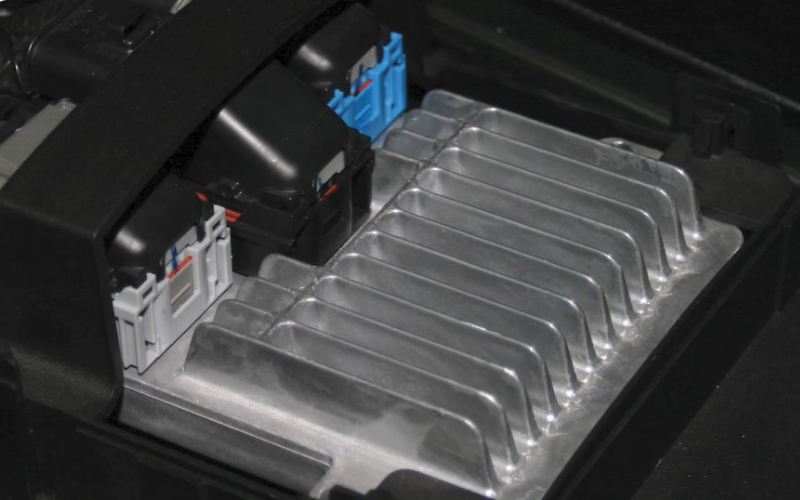
The Powertrain Control Module is a component of the 6.0 Powerstroke engine that monitors data from various sensors, including the Engine Control Module (ECM) and Transmission Control Module (TCM).
If the PCM fails, it can result in miscommunication and miscalibration within the vehicle system. If you have a faulty PCM, you will have to replace it with a new one.
- Start by removing the negative terminals of the battery.
- Then proceed by removing the bolts holding the connectors together.
- Now you can safely take out the PCM.
- Next install the new PCM in the passenger compartment from which you removed the old one.
- Now reconnect the negative battery terminals.
- Finish by proceeding to the PCM programming.
Prices for replacing the PCM go between $70 and $160.
FAQs.
Low ICP is a very common issue on the 6.0 Powerstroke engines. Users have a lot of questions on their minds regarding the diagnosis of the problem. The following are the most common questions asked by users on this issue.
What Does The Injection Control Pressure Do On The 6.0 Powerstroke Engines?
The Injector Control Pressure, ICP in short, is a sensor that detects the amount of fuel that is being transmitted to the 6.0 Powerstroke engine. The reading from the sensor is used by the system to adjust the engine performance.
How Can You Fix The Issue Of Low Injection Control Pressure On 6.0 Powerstroke Engines?
There are numerous causes for the low ICP on the 6.0 Powerstroke engines. The following are appropriate fixes for all those causes.
Replacing the oil in the engine.
Fixing the oil leaks.
Getting a new ICP sensor.
Getting a new injector control regulator.
Changing the PCM.
What Happens If The Control Pressure Sensor Goes Off On The Diesel Of A 6.0 Powerstroke Engine?
The 6.0 Powerstroke engine runs on diesel, so it does not function on the mechanism of spark plug ignition. Instead, it needs a very specific mixture of diesel fuel.
If there is an irregular amount of fuel or pressure on the fuel, the ICP sensor will immediately signal to the computer.
What Code Is Related To 6.0 Powerstroke Injection Control Pressure?
The Powerstroke 6.0 engines come with a set of diagnostic trouble codes (DTC )to detect engine problems. The DTC P2291 indicates that there is low or inadequate fuel pressure in the powerstroke engine.
Conclusion
ICP problems are not uncommon with the Powerstroke engines, especially the issue of low ICP caused by a faulty ICP sensor or other faulty components.
If the ICP sensor is faulty, then you have no choice but to replace the ICP sensor with a new one. You will also have to get it replaced if the fault is with the other components such as the pressure regulator or control module.
Always take appropriate safety precautions such as making sure to disconnect the battery terminals before operating on them. Also make sure that the oil or other fluid leaks should be disposed of in a safe manner.
- Read Also>> What Is Code P1211 On 7.3 Powerstroke & How To Fix It?
- Read Also>> 6.0 Powerstroke Towing Capacity | Everything You Should Know
- Read Also>> 7 Easy Solutions For Hydra Tuner Problems On 7.3 Powerstroke
- Read Also>> P0472 Code On 6.4 Powerstroke: Exhaust Pressure Sensor Problem
- Read Also>> P0237 6.0 Powerstroke: Turbocharger Boost Sensor A Circuit Low


